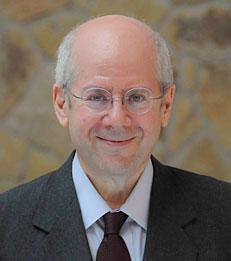Opinion
How Low Can They Go?
—


The bottom line: international experience suggests that negative interest rates, at least as low as we are seeing today and (in some places) significantly lower, will become a permanent part of the monetary policy toolkit.
By Kim Schoenholtz and Stephen Cecchetti
Not long ago, nearly everyone thought that nominal interest rates could not go below zero. Now, we have negative policy rates in the euro area and Japan, while in Sweden and Switzerland, the lowest controlled rate is below -1%. And government securities worth trillions of dollars bear negative rates, too.
When we first wrote about negative rates a year ago, we argued that the effective lower bound (ELB, rather than ZLB) for nominal rates was determined by the transactions costs of storing and transferring cash. While Fed staff estimate pure storage costs — exclusive of security and insurance — at about 0.35%, we reasoned from the behavior of money market mutual funds with broader transactions costs that the ELB might be in the range of -0.50% (minus one-half percent). Below that, we thought, there would be a move into cash, facilitated by banks and others who would efficiently manage the notes for clients.
The pure storage costs seem modest. After all, SFr 500 million of 1,000 Swiss Franc notes takes up only about a cubic meter of space. (For €500 euro notes and $100 bills, a cubic meter is on the order of €300 million and $90 million, respectively.) Why wouldn’t banks offer accounts that were claims on a part of this relatively small pile of cash in their vault? During the day, the funds would be available just like a checking account, but would be swept into cash currency rather than being held as reserves at the central bank. Overnight, the piles of currency belong to customers, while during the day they are the asset balancing the cash account liability on the bank’s own account.
Read full article as published by The Huffington Post.
___
Kim Schoenholtz is Professor of Management Practice in the Department of Economics and Director of the Center for Global Economy and Business.
When we first wrote about negative rates a year ago, we argued that the effective lower bound (ELB, rather than ZLB) for nominal rates was determined by the transactions costs of storing and transferring cash. While Fed staff estimate pure storage costs — exclusive of security and insurance — at about 0.35%, we reasoned from the behavior of money market mutual funds with broader transactions costs that the ELB might be in the range of -0.50% (minus one-half percent). Below that, we thought, there would be a move into cash, facilitated by banks and others who would efficiently manage the notes for clients.
The pure storage costs seem modest. After all, SFr 500 million of 1,000 Swiss Franc notes takes up only about a cubic meter of space. (For €500 euro notes and $100 bills, a cubic meter is on the order of €300 million and $90 million, respectively.) Why wouldn’t banks offer accounts that were claims on a part of this relatively small pile of cash in their vault? During the day, the funds would be available just like a checking account, but would be swept into cash currency rather than being held as reserves at the central bank. Overnight, the piles of currency belong to customers, while during the day they are the asset balancing the cash account liability on the bank’s own account.
Read full article as published by The Huffington Post.
___
Kim Schoenholtz is Professor of Management Practice in the Department of Economics and Director of the Center for Global Economy and Business.
